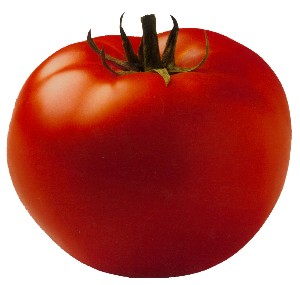You are here
Companion Gardening: Strategically Planning your Garden for Greatest Effect

Age old garden wisdom, over the expanse of time, has shown us that crops and other vegetation thrive when paired with particular plants but struggle greatly when paired with others. Black walnut trees are a great example of this. If you plant tomato plants near your black walnut tree, you will see your plants first begin to yellow, then wilt, and finally die before producing a single fruit. This is due to the substance called juglone that is released by the roots of the black walnut tree that damages the tomato plant.
While some plants are harmful to their neighbors, others when planted together actually help each other. Blueberries and thimbleberries, for example, love to be near pine trees because of the acidic soil pines create. Garlic not only has the neat quality of helping herbs produce their essential oils, it also deters garden pests much like the Japanese beetle. Insect repellent is the other benefit to companion gardening. Many plants such as garlic, mint, basil, and onion repel insects naturally. Marigolds are the queen of insect repellant and so planting it liberally throughout your garden would be highly beneficial. With a little strategic planning, you can decrease damage from insects while simultaneously creating a synergistic cooperative growth within your bountiful vegetable garden.
Use this chart to help you in planning your garden this spring and to choose how to group your plants for best results.
|
Plant |
Does Well with |
Does Poorly with |
|
Artichoke |
Sunflower, Tarragon |
None |
|
Asparagus |
Basil, Parsley, Tomato |
Chive, Garlic, Leek, Onion, fennel |
|
Basil |
Pepper, Tomato (Improves flavor), Marigold |
rue |
|
Berries (applies to strawberries, bush berries, grapes) |
Bush Beans, Lettuce, Onion, Spinach |
Cabbage |
|
Bush Beans |
Sunflower as bees like partial shade and bees, Beets, Cabbage family, Carrots, Celeriac, Celery, Corn, Cucumbers, Eggplant, Lettuce, Marigold, Pea, Potato, Radish, Rosemary, Strawberry, Savory, Tansy, Marigold |
Basil, Fennel, Kohlrabi, Onion |
|
Pole Beans |
Carrots, Corn, Cucumber, Eggplant, Lettuce, Marigold, Pea, Radish, Rosemary, Savory, Tansy |
Basil, Beets, Cabbage, Fennel, Kohlrabi, Onion, Sunflower |
|
Beets |
Bush Beans, Cabbage family, Lettuce, Onion family, Radish, Sage |
Mustard, Pole Beans |
|
Cabbage Family (includes broccoli, brussels sprouts, cauliflower, kale) |
Basil, Bush Beans, Beets, Carrot, Celery, Chamomile, Chard, Cucumber, Dill, Garlic, Hyssop, Lettuce, Marigold, Mint, Nasturtium, Onion family, Oregano, Rosemary, Sage, Spinach, Thyme, Tomato, Wormwood |
Bush and Pole Beans, Grapes, Rue, Strawberry |
|
Carrots |
Beans, Cabbage family, Chives, Leeks, Lettuce, Onion family, Peas, Peppers, Radish, Rosemary, Sage, Tomato |
Caraway, Celery, Dill |
|
Celery |
Bush Beans, Cabbage family, Nasturtium, Onion family, Spinach, Tomato |
Carrot, Parsley, Parsnip |
|
Corn |
Beans, Cabbage family, Cucumber, Dill, Melon family, Parsley, Peas, Pumpkin, Squash, Sunflower |
Tomato |
|
Cucumbers |
Beans, Cabbage family, Carrot, Corn, Lettuce, Marigold, Nasturtium, Onion family, Peas, Radish, Savory, Sunflower, Tomato |
Strong Herbs, Potato |
|
Eggplant |
Beans, Garlic, Marigold, Pea, Pepper, Potato, Spinach, Tarragon, Thyme |
Fennel |
|
Fennel |
Most plants dislike it |
|
|
Garlic |
Rose and raspberries (deters Japanese beetle); helps herbs with their production of essential oils plant liberally throughout garden to deter pests. |
|
|
Leek |
Onions, celery and carrots |
|
|
Kohlrabi |
Beet |
Pepper |
|
Lettuce |
Beans, Carrots, Collards, Cucumbers, Onion family, Radish, Strawberries |
Broccoli, Fava Bean, Grains |
|
Melons |
Corn, Nasturtium, Radish |
Potato |
|
Mint |
The Cabbage family and Tomatoes, deters the cabbage moth. |
|
|
Onion (includes Chives, Garlic, Leek) |
Beets, Broccoli, Brussels Sprouts, Cabbage family, Carrot, Cauliflower, Celery, Chamomile, Collard, Cucumber, Dill, Kale, Lettuce, Pepper, Potato, Radish, Rose, Savory, Squash, Strawberry, Tomato |
Asparagus, Beans, Gladiolus, Peas |
|
Parsley |
Tomato and asparagus |
|
|
Parsnip |
|
Delphinium, Larkspur |
|
Peas |
Beans, Carrots, Corn, Cucumber, Eggplant, Lettuce, Radish, Spinach, Tomato, Turnip, and squash when peas follow it up the trellis. Peas add nitrogen to soil |
Onion family, Gladiolus, Potato |
|
Pepper |
Bean, Carrot, Marigold, Marjoram, Onion family, Tansy, Tomato |
|
|
Potato (sweet Potato friends and enemies unknown) |
Beans, Cabbage family, Corn, Collard, Coriander, Eggplant, Horseradish, Lettuce, Marigold, Onion family, Parsnip, Pea, Petunia |
Fennel, Kohlrabi, Melon family, Parsnip, Rutabaga, Squash family, Sunflower, Tomato, Turnip |
|
Radish |
Beans, Cabbage family, Carrot, Chervil, Collard, Cucumber, Grapes, Lettuce, Melon family, Nasturtium, Onion family, Pea, Squash |
Hyssop |
|
Rutabaga |
Onion family, Pea |
Potato |
|
Spinach |
Cabbage family, Celery, Corn, Eggplant, Pea, Strawberry |
|
|
Squash and Pumpkin |
Corn, Eggplant, Marigold, Nasturtium, Onion family, Radish |
Potato |
|
Tomato |
Asparagus, Basil, Bush Bean, Cabbage family, Carrots, Celery, Marigold, Mint, Onion family, Parsley, Pepper |
Corn, Dill, Fennel, Pole Bean, Potato |
|
Turnip |
Onion family, Pea |
Potato |


Comments
Great Information!
thank you
I was looking into this last year but never tried it. That's a great chart on what plants help each other out.
You're Welcome Lilly!
Let us know if you do some strategic companion planting
Thanks..
Not many black walnut trees around here ;)»
Thanks for the companion planting chart..
Have a great one :)»
Thanks so much for what you do RobBob
You do some Amazing projects. Very inspirational!